
How to strengthen team morale and engagement with better collaboration
Reading time: about 9 min
Topics:
This article is adapted from the webinar “Strengthening team cohesion and morale.” You can watch the full webinar recording below.
As employee anxiety increases in the face of uncertain market conditions and layoffs, businesses should be hyper-focused on maintaining strong morale so productivity doesn’t take a nosedive.
Easier said than done, right?
The importance of work-life balance on employees’ productivity and businesses’ bottom line is well researched, and the data doesn’t pull any punches:
- A report from Gallup found that only about 1 in 5 employees were engaged at work, loosely defined as being enthusiastic and involved in furthering workplace initiatives and finding their work meaningful and rewarding.
- Another survey found that workers who were engaged in their job (versus non-engaged and actively disengaged workers) reported higher satisfaction with their personal life and fewer instances of behaving poorly with family and friends as a result of workplace stress.
- Workers with higher workplace stress regularly report higher rates of burnout and health issues, and burned-out employees are also more likely to quit.
- Gallup also found that business units with engaged workers had 23% higher profit than ones where workers were miserable in their roles—with engagement strongly linked to performance outcomes like retention, productivity, safety, and profitability.
With low employee engagement costing the global economy a cool $7.8 trillion, maintaining high employee morale and cohesion is clearly a universal concern. But even with a desire to improve your employee’s quality of life at work, it’s understandable to feel daunted by how exactly to go about increasing engagement for your team.
What do teams really need to function at their best right now?
At Lucid, we’re deeply passionate about providing better tools for knowledge workers to collaborate, align, innovate, and build—because we understand that enabling high-value collaboration is key to better employee engagement and improved business outcomes.
We’re also curious how other leaders and builders in the collaboration space are approaching the issue of strengthening team cohesion, morale, and engagement. So we asked them.
Here’s what leaders from Rows and airfocus—plus a few members of the Lucid team—had to say about the current state of collaboration and strategies for building stronger teams.
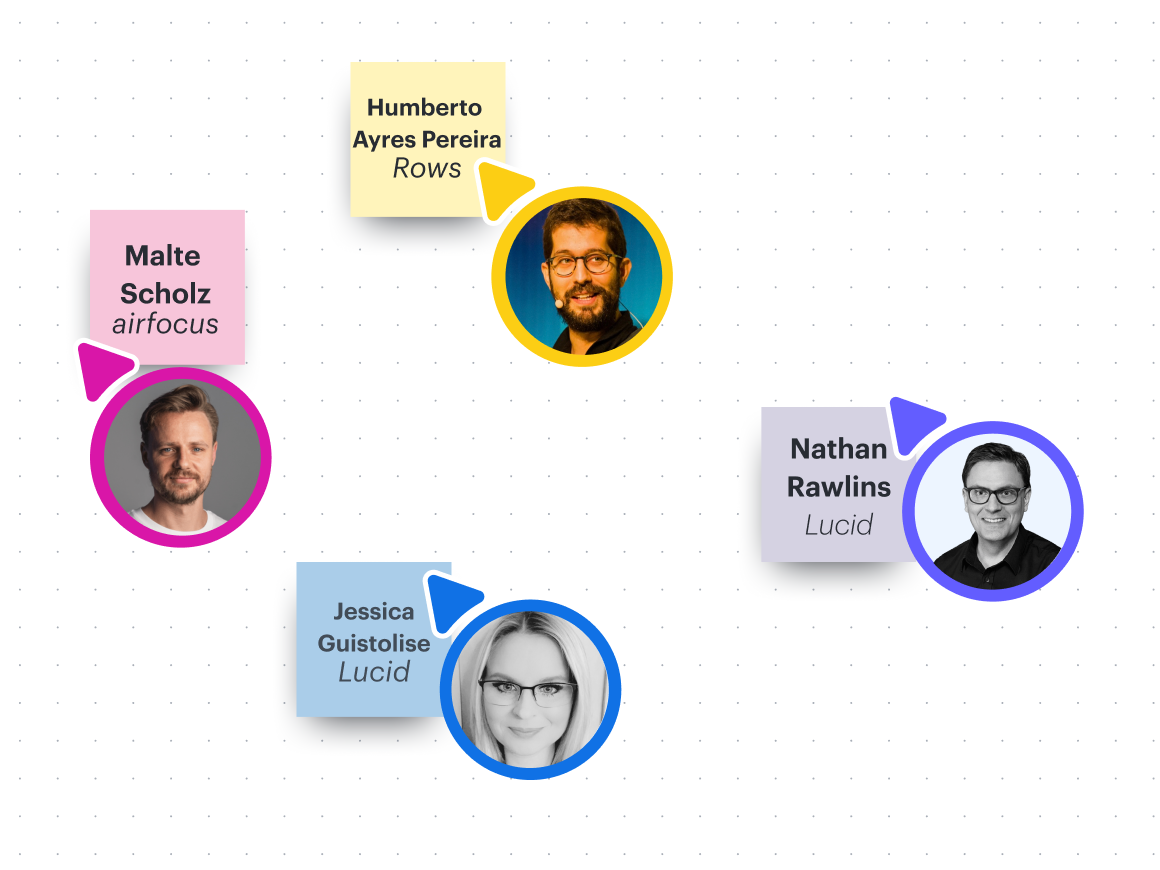
Provide transparency around business decisions and results
For Rows co-founder and CEO Humberto Ayres Pereira, hyper transparency was a key competitive advantage for his small no-code spreadsheet company to be able to build and ship value quickly.
“It’s been good to be so transparent,” said Pereira. “And it compounds over time, making the team progressively more transparent themselves when they encounter small problems and anxieties.”
And while being hyper transparent does tend to raise the amount of questions employees ask its leadership team, Pereira counts this as a positive, noting that it encourages conversations and builds decisiveness within the team.
“Being transparent means sometimes we’ll get things wrong as a business and have to have open conversations about that,” said Pereira. “But over time, any anxiety around transparency smooths, and people learn to find answers on their own. We’re a lot less traumatized by bad news and a lot more positive about good news.”
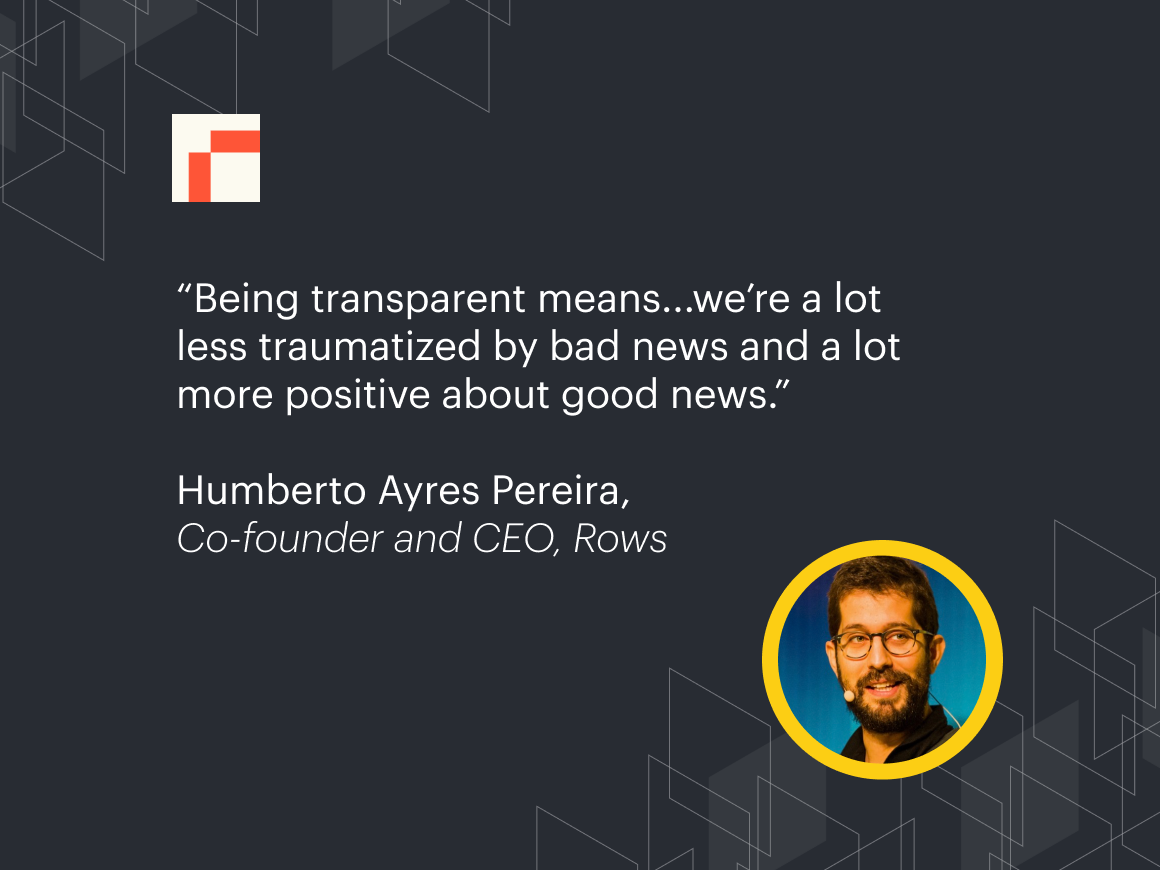
Lucid evangelist Jessica Guistolise echoed Pereira’s thoughts, citing honesty as the key to avoiding “organizational trauma” due to a lack of transparency.
“When organizations’ initial reaction is to hide everything, shy away from the truth, and make up stories to protect employees from hard news, it creates ripples of distrust,” said Guistolise. “It’s hard to get that trust back once it’s gone, and that then becomes your culture. Organizations instead need to double down on transparency during difficult times.”
If you’re struggling to embrace transparency, there are you few strategies you can employ:
- Embrace the role of conflict: It might seem counterintuitive or uncomfortable, but conflict is often what incites innovation. If leaders can learn to see conflict as an opportunity for growth rather than a problem, they can use conflict resolution strategies that actually increase team collaboration and performance.
- Invest in innovation repositories: Instead of letting all the valuable ideation, strategy, and procedural best practices at your business float away into the ether—or worse, locking them up in private documents—consider developing innovation repositories. By turning your company’s “greatest hits” into functional, highly visual documentation you can iterate from and share across teams, it’s much easier to build a living blueprint of your business. This will allow you to identify patterns of success so you can repeat them.
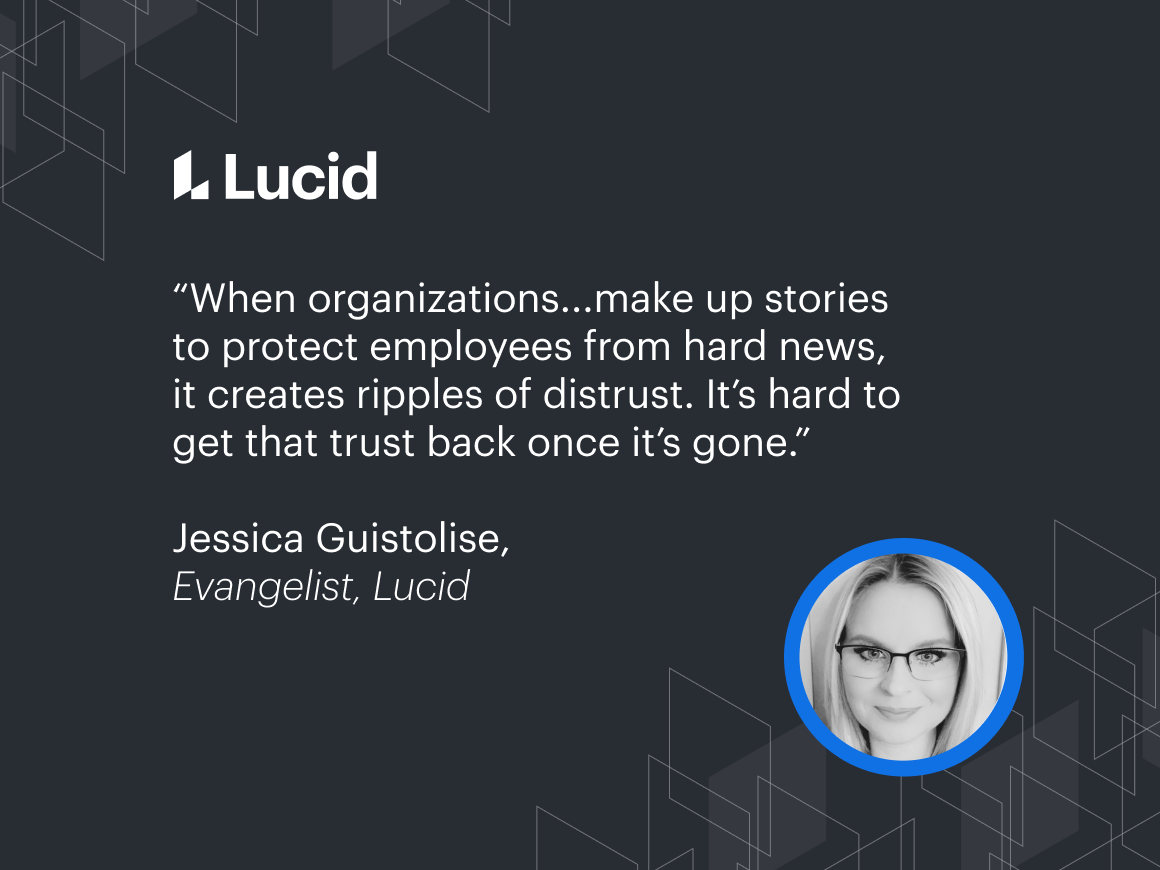
Offer tools and training to facilitate collaboration
If you’re still viewing collaboration skills as just a fluffy “nice to have,” you might be missing out on one of the key areas in which you can strengthen your team. This is because many teams harbor a lot of dysfunction in the way they collaborate—and don’t do anything about it because they don’t know how to identify what’s wrong so they can fix it.
In a recent piece on the problems with modern collaboration, Lucid CMO Nathan Rawlins pointed out how our definition of collaboration is often flawed.
“When we fail to distinguish between collaboration and communication, teams end up spending a lot of time talking about work but rarely getting to a point of action,” said Rawlins. “When we view collaboration as synonymous with meetings, we’re essentially reducing teamwork, problem-solving, and even agility to single points in time on our calendars.”
But improving collaboration extends beyond merely changing how we define it. Organizations need to be rigorous in how they improve their skills.
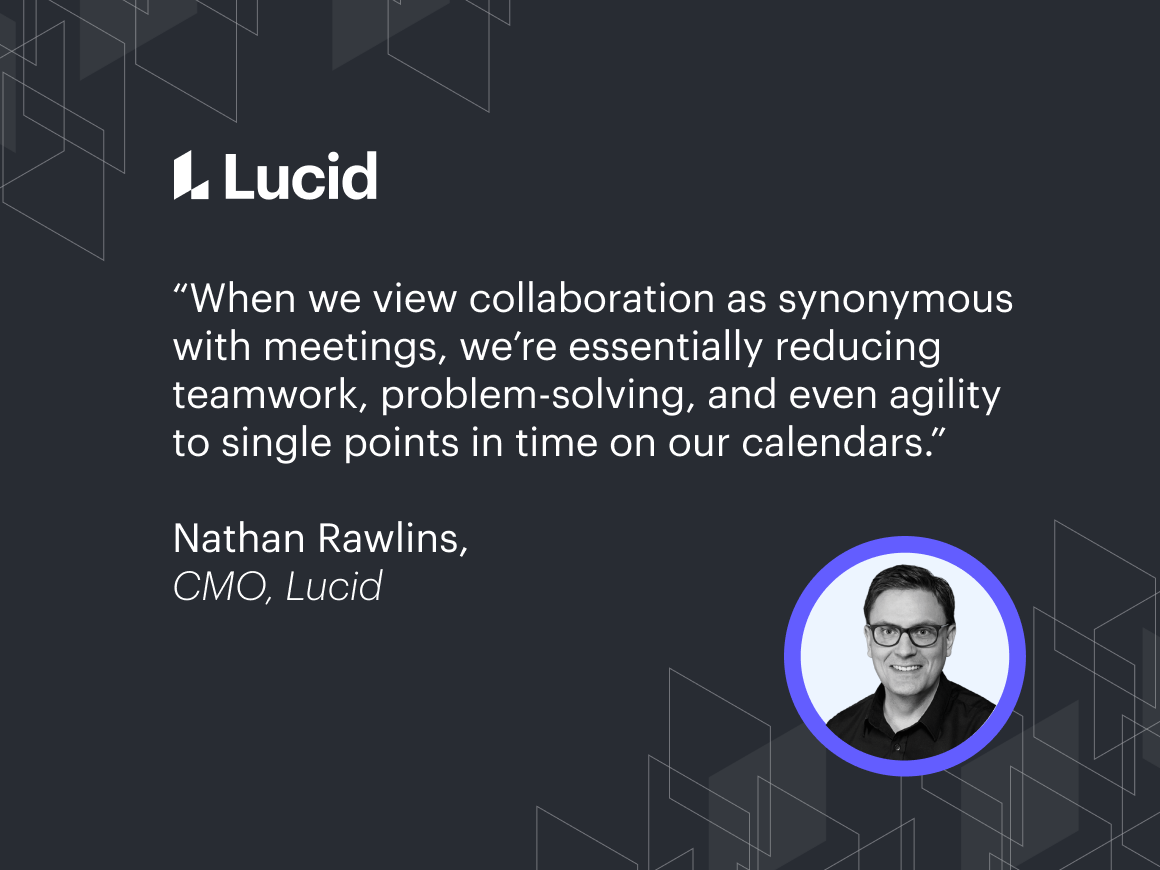
To focus their efforts on the type of high-value collaboration Rawlins references, teams should inspect the quality of their interactions, not just the quantity. For airfocus co-founder and CEO Malte Scholz, asynchronous collaboration has been the key to increasing the quality of collaboration among his distributed workforce.
“People don’t crave more virtual meetings,” said Scholz. “They appreciate being able to have focus time throughout the day. If you can develop rules around how you work together in your asynchronous platforms, I think you can easily cut down on about 50% of meetings.”
Scholz also cited the importance of over-communicating, embracing different perspectives and personalities on your team, investing in single sources of truth, and having rich points of daily connection as keys to modern collaboration.
Looking for other ways to improve your collaboration skills? Consider these approaches:
- Move toward methods of visual collaboration: We’re past the days of physical whiteboards, rote presentations, and dry documents being the primary places where work gets done. Scholz, Pereira, and Guistolise all noted tooling as a critical element of improving collaboration—and using an interactive visual collaboration platform like Lucid can help resolve a lot of the engagement and alignment issues many hybrid and remote teams face. This is because visuals make it easier to communicate complex ideas, share context, get buy-in, and plan large-scale initiatives on an infinite canvas.
- Build facilitation skills: Much of the problem with meeting culture boils down to poor facilitation, which leads teams to waste time on tangents and aimless chat instead of focusing on business impact. With better facilitation skills, you can turn collaborative sessions that were previously “money pits” into collaborative sessions where high-value work gets done.
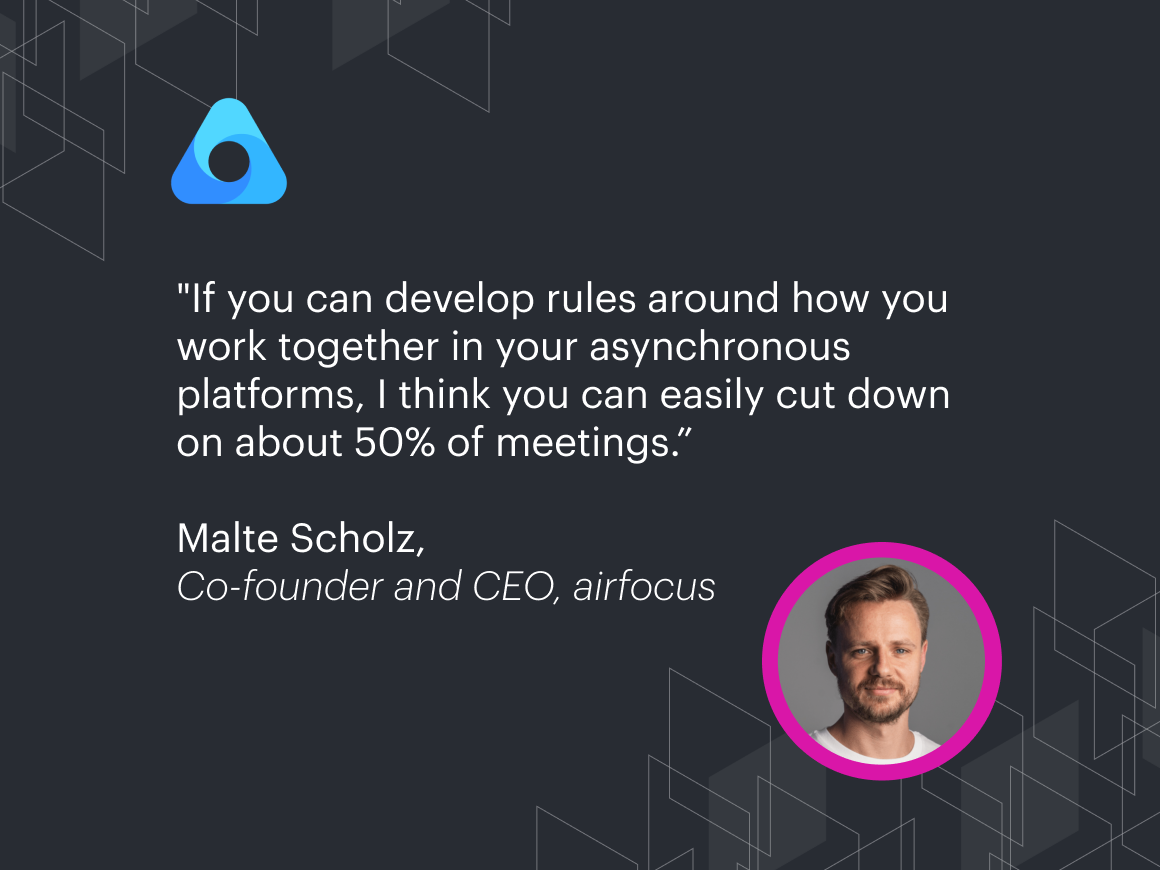
Focus on building team connection
One recurring theme our experts brought up: It’s impossible to truly collaborate well if you don’t feel connected to your team. And investing in making sure your team has strong personal connections isn’t just a feel-good strategy—it’s also good business.
As Scholz alludes to, it’s difficult to deliver an excellent product strategy and meet the personal needs of a diverse customer base if your own team isn’t treated as unique and human themselves. Instead of forcing his team into a monoculture, Scholz embraces their differences.
“The only way we are going to succeed is if we have the right people on board,” said Scholz. “I don’t want to hire a group of people that just look like me. I want a diverse group, and so we really put resources behind this idea of adapting to the lifestyles and personalities of our team.”
Scholz also focuses on giving his team modularity and customizability in how they design their working environment, tool sets, and schedules. As he notes, people are more than one thing outside of work, so why should that be any different at work?
For Pereira, accommodating the diverse skill sets of his employees and recognizing their humanity also means giving them the space to take ownership of their work and new things they’d like to work on, to the degree they are passionate about doing so.
“As a leader, you have to give people the opportunity to speak up and to be involved,” said Pereira. “Some people may naturally want to be more involved in risky, experimental projects, and some may gel more around ongoing initiatives. I think that optionality in letting people work the way they work best is important.”
Struggling to build human connection as a remote or hybrid team? Try investing in these areas:
- Provide opportunities to connect before jumping into the content of a meeting: While not every quick check-in or coordination meeting needs to have a morale-building activity, bake moments of human connection into your recurring meetings with your core team—like weekly team strategy discussions, stand ups, sprint retrospectives, or roadmapping sessions. This will help eliminate feelings of alienation for remote team members, and build the trust and psychological safety teammates need to be able to be their most creative. Try utilizing one of Lucidspark’s team building templates if you need to start somewhere easy.
- Learn your team’s collaboration preferences: Many morale issues are a symptom of people being disengaged with their work, and the cause might simply be that they don’t have the resources or freedom to collaborate at their best. Learning whether each member of your team is an introspective, relational, or expressive collaborator (which you can find out in this two-minute quiz) will help you make sure no one is left out of the collaboration process.

Learn how to better navigate your team through hardship by becoming a stronger leader.
Get the ebookAbout Lucid
Lucid Software is the leader in visual collaboration and work acceleration, helping teams see and build the future by turning ideas into reality. Its products include the Lucid Visual Collaboration Suite (Lucidchart and Lucidspark) and airfocus. The Lucid Visual Collaboration Suite, combined with powerful accelerators for business agility, cloud, and process transformation, empowers organizations to streamline work, foster alignment, and drive business transformation at scale. airfocus, an AI-powered product management and roadmapping platform, extends these capabilities by helping teams prioritize work, define product strategy, and align execution with business goals. The most used work acceleration platform by the Fortune 500, Lucid's solutions are trusted by more than 100 million users across enterprises worldwide, including Google, GE, and NBC Universal. Lucid partners with leaders such as Google, Atlassian, and Microsoft, and has received numerous awards for its products, growth, and workplace culture.
Related articles
Why is emotional intelligence important in leadership? Understanding the 4 quadrants of emotional intelligence
Learn emotional intelligence strategies for leadership and self-management of your own. Delve into the 4 quadrants of emotional intelligence (EQ).
3 anti-patterns holding you back from better collaboration
If you’re feeling like collaboration is lacking on your team, approaching improvement by identifying and tackling anti-patterns can be a helpful framework.
4 ways to recession-proof your business
Here are four actions to take now in order to recession-proof your business for the future.
How to focus your team on high-value collaboration
When collaboration is flowing, it's exciting—but too often, teams approach collaboration without any strategy or purpose, and poor results follow. The key to working consistently well together? Focusing on high-value collaboration.
